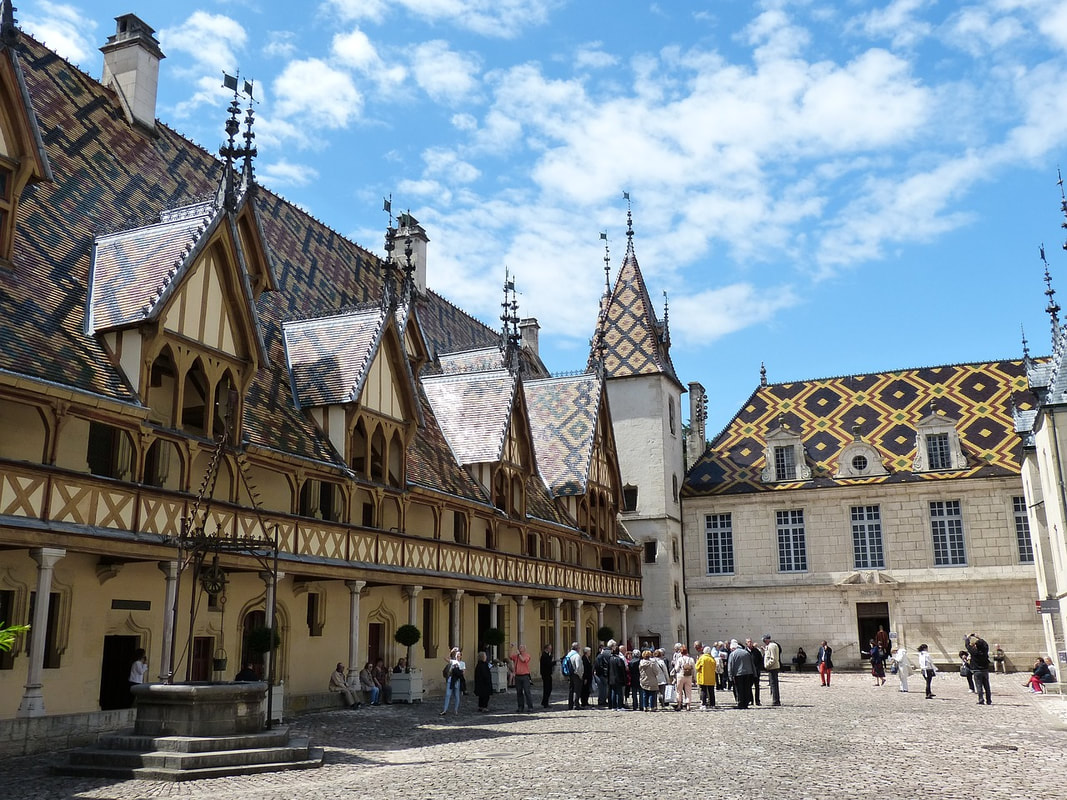|
8/17/2023
Experiences on the Saône RiverFrance offers a number of wonderful river and barge cruise options, with itineraries along the Rhone and Saône River becoming increasingly popular - now one of the top choices behind Rhine and Danube options. You experience the best of Burgundy and Provence - scenic landscapes along with a lovely mix of culinary and wine experiences, fascinating Roman history (and a little bit of Van Gogh). The Saône River in particular is an area less touched by high tourism. Check out experiences you can have in this area of the Burgundy region. DIJON Dijon is located approximately 200 miles from Paris, in the very northern portion of Burgundy. The city was chosen as the capital of Burgundy in 1015 by Duke Robert I. It has a university and is rich in architecture and museums. Pardon me, do you have any Grey Poupon? Yes, this brand originated here in 1866. Known as the birthplace of mustard, Dijon was the center of mustard making in the latter part of the Middle Ages. The condiment was actually made in most of France’s wine regions, however the Burgundy region became famous for its quality mustards- a symbol of wealth and prestige - influenced by the Dukes of Burgundy. Dijon mustard was different from other varieties in that juice from unripe grapes (versus just vinegar) was used in the manufacturing process. Today, the manufacturing and packaging of Dijon mustard is no longer tied to the region (it can be made anywhere). Experiences in Dijon include a guided city walking tour or a visit to Château d'Arcelot, a neoclassical castle located a few miles outside of the city. Here you can tour 12 fully furnished 18th-19th century rooms and the surrounding park. The castle has remained n the same family since it’s construction. BEAUNE Beaune is the wine capital of the Burgundy region (I’m told monks produced wine here as early the Middle Ages). Filled with cobblestone streets and half-timbered houses, Beaune has plenty of opportunities to sample amazing wines. Hospices de Beaune, also known as Hotel-Dieu, a former hospital for the disadvantaged built in the 15th century, is the most recognized site in the city. TOURNUS Tournus, like many towns in the area, has history dating back to the Romans. It is an interesting town to explore, with a medieval city center, narrow alley ways and stone houses. While here visit the Benedictine Abbey of Saint Philibert, built in the 9th century and represents one of the oldest examples of Romanesque architecture. Chocolate lovers can make a visit to Cité du Chocolat at Valrhona for a wine and chocolate tasting . Between Tournus and Macon, you can vist Château de Cormatin, a moated chateau built in 1606. It features ornate apartments and a beautiful garden. MACON Mâcon is situated at the southern end of Burgundy. Once known for its red wines, white wines, primarily Chardonnay, have grown in prominence. One of France’s most famous poets, Alphonse de Lamartine, hails from here. Venturing off the beaten path to nearby Cluny is a big draw in this area. The charming town grew up around the Benedictine Abbey of Cluny, which was built in 910. The Abbey, dedicated to St Peter, was once the world’s largest church and is a must see experience. LYON The Saone River meets the Rhone in Lyon. France’s third largest city is well known for its culinary culture offering Michelin rated restaurants to fine dining and bouchons with traditional Lyonnaise cuisine. Lyon’s historic center is a designated UNESCO site. A great place to start is Fourvière Hill, home to the 19th century basilica Notre-Dame de Fourvière. Perched on a hilltop, the terrace offers amazing, not be missed views of the city. A guided rooftop tour offers even more exceptional views, of the city and inside the basilica. Old Town is equally impressive with its narrow hidden covered passageways, unique shops and eateries. Lesser known is Lyon's history in silk production, which dates back to medieval times. Silk was a favored material of the French aristocrats and became a booming industry by 1540. Poor labor conditions brought the industry basically to a halt during the 17th and 18th centuries. The silk trade revived in the 19th century (thanks to the Bonapartes). Learn about the silk making history at the Maison des Canuts. Ready for an experience that takes your adventure to a new level?
I'm here to help you. Let's chat to see what is right for you. Get started HERE. Comments are closed.
|
Laurie Marschall - Owner and Founder
|








 RSS Feed
RSS Feed
